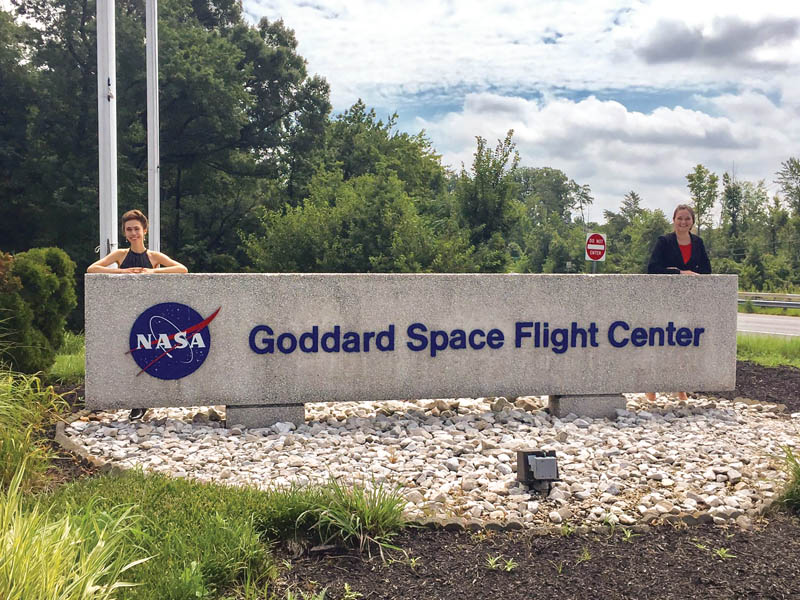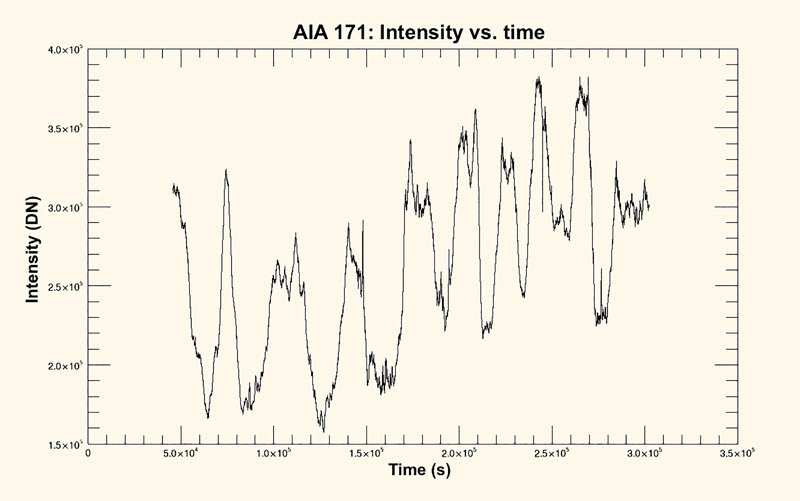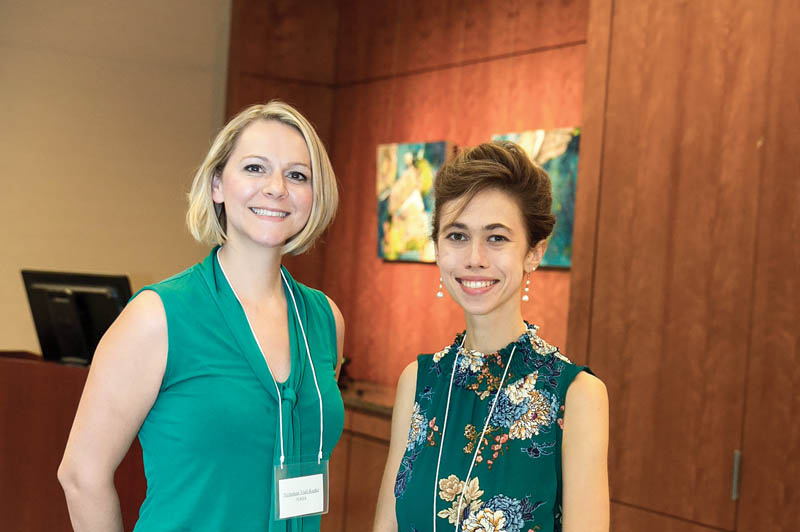Understanding Solar Coronal Heating through Nanoflare Modeling
Fall
2017
Building Blocks - Undergraduate Research and Outreach Projects
Understanding Solar Coronal Heating through Nanoflare Modeling
A nontraditional student probes one of astrophysics’ enduring mysteries—and discovers a physics community
By:Kristine Romich, SPS 2017 Intern, California State University, Northridge

Suppose you’re hanging out by a campfire. If you wanted to warm up, you’d move in closer to the flame. You wouldn’t expect it to get hotter as you walk away! But that’s exactly what’s happening in the atmosphere of the Sun. The photosphere, or the Sun’s visible surface, maintains an average temperature of just under 6,000 kelvin, whereas the corona—its wispy outer layer—can reach temperatures of several million kelvin.
The coronal heating problem is one of the outstanding mysteries in solar physics, and as one of the 2017 SPS interns, I had the opportunity to explore it myself. This summer I spent ten weeks in the heliophysics division at NASA’s Goddard Space Flight Center, where I worked under Dr. Nicholeen Viall-Kepko to investigate whether nanoflares—short-lived energy bursts in the solar atmosphere—can explain the temperature evolution observed in the corona.
I never imagined I’d be doing anything of the sort. Three years ago, I was an administrative assistant in a corporate office. While I’d always been fascinated with space science, that fascination wasn’t something I talked about much. My prior degree was in psychology. I can’t blame my old friends for the funny looks they gave me when I announced that I was going to be an astrophysicist.
I wouldn’t have gone back to school without the encouragement of my husband, who first suggested it. He told me he thought I’d be good at physics. I told him I thought he was crazy.
Within six months of enrolling at community college, I got a job as a physics tutor and as a learning assistant for an electricity and magnetism course. I signed up for SPS after a summer 2016 REU at the University of Wisconsin - River Falls, which has a thriving chapter. I figured joining a national community of physics students could only help me. I had no way of knowing how much it would.

For one, now I can say I’ve worked at NASA.
At Goddard I wrote code to simulate nanoflares, with the intent of comparing their effect on the solar plasma to the real data gathered by the Atmospheric Imaging Assembly (AIA) aboard NASA’s Solar Dynamics Observatory spacecraft. Using the AIA data, we can plot the intensity of light from a particular location on the Sun as a function of time. Figure 1 shows such a time series. The fluctuations in intensity indicate changes in temperature.
Since the temperature of the corona was first discovered, scientists have proposed a number of explanations for its heating mechanism. Many have since been disproven. Nanoflares are currently scientists’ best guess as to what makes the corona so hot. We can’t see nanoflares, but we’re pretty confident that we can see what they do!
To test our theory, we first use my code to estimate the amount of energy released in a sequence of nanoflares. Next, we run it through a modeling code called EBTEL (Klimchuk et al. 2008, Cargill et al. 2012), which simulates the response of the plasma. EBTEL generates artificial intensity-vs.-time curves, which we can then compare to the real data (see Fig. 1).
One summer, unfortunately, isn’t nearly enough time to complete a project of this magnitude. By the time the internship ended, I had just begun running analysis on the first set of simulated data. The next step is to run analysis on the real data. If we find similar patterns in our simulations, which assume nanoflare heating, and the AIA data, that tells us we’re probably on to something!

Kristine Romich earned her A.S. from Harold Washington College, one of the City Colleges of Chicago, in 2016. She currently lives in the Los Angeles area and is continuing her studies in physics at California State University, Northridge. This December, Kristine will present the research described here at the American Geophysical Union’s Fall Meeting in New Orleans.
References
Cargill, P. J., Bradshaw, S. J., & Klimchuk, J. A. 2012, The Astrophysical Journal, 752:161.
Klimchuk, J. A., Patsourakos, S., & Cargill, P. J. 2008, The Astrophysical Journal, 682:1351.
More from this department
Building Blocks - Undergraduate Research and Outreach Projects
